
Terns are seabirds in the family Laridae that have a worldwide distribution and are normally found near the sea, rivers, or wetlands. Terns are treated as a subgroup of the family Laridae which includes gulls and skimmers and consists of eleven genera. They are slender, lightly built birds with long, forked tails, narrow wings, long bills, and relatively short legs. Most species are pale grey above and white below, with a contrasting black cap to the head, but the marsh terns, the Inca tern, and some noddies have dark plumage for at least part of the year. The sexes are identical in appearance, but young birds are readily distinguishable from adults. Terns have a non-breeding plumage, which usually involves a white forehead and much-reduced black cap.
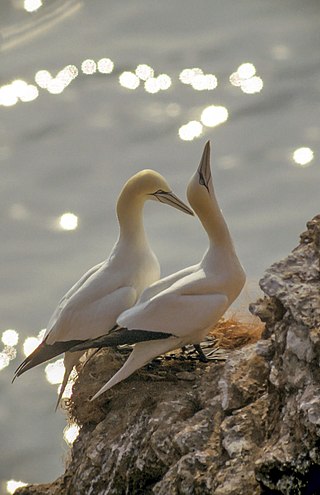
Gannets are seabirds comprising the genus Morus in the family Sulidae, closely related to boobies.

Flamborough Head is a promontory, 8 miles (13 km) long on the Yorkshire coast of England, between the Filey and Bridlington bays of the North Sea. It is a chalk headland, with sheer white cliffs. The cliff top has two standing lighthouse towers, the oldest dating from 1669 and Flamborough Head Lighthouse built in 1806. The older lighthouse was designated a Grade II* listed building in 1952 and is now recorded in the National Heritage List for England, maintained by Historic England. The cliffs provide nesting sites for many thousands of seabirds, and are of international significance for their geology.

The European shag or common shag is a species of cormorant. It is the only member of the monotypic genus Gulosus. It breeds around the rocky coasts of western and southern Europe, southwest Asia and north Africa, mainly wintering in its breeding range except for the northernmost birds. In Britain this seabird is usually referred to as simply the shag. The scientific genus name derives from the Latin for glutton. The species name aristotelis commemorates the Greek philosopher Aristotle.

The common murre, also called the common guillemot or foolish guillemot, is a large auk. It has a circumpolar distribution, occurring in low-Arctic and boreal waters in the North Atlantic and North Pacific. It spends most of its time at sea, only coming to land to breed on rocky cliff shores or islands.
The British Ornithologists' Union (BOU) aims to encourage the study of birds (ornithology) around the world in order to understand their biology and aid their conservation. The BOU was founded in 1858 by Professor Alfred Newton, Henry Baker Tristram and other scientists. Its quarterly journal, Ibis, has been published continuously since 1859.
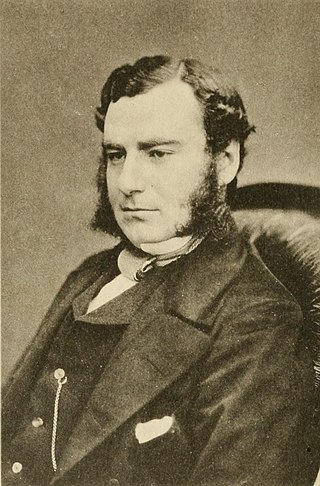
Alfred Newton FRS HFRSE was an English zoologist and ornithologist. Newton was Professor of Comparative Anatomy at Cambridge University from 1866 to 1907. Among his numerous publications were a four-volume Dictionary of Birds (1893–6), entries on ornithology in the Encyclopædia Britannica while also an editor of the journal Ibis from 1865 to 1870. In 1900 he was awarded the Royal Medal of the Royal Society and the Gold Medal of the Linnaean Society. He founded the British Ornithologists Union.

Andrew Hartley Dismore is a British Labour politician who was the Member of the London Assembly for Barnet and Camden from 2012 to 2021. He previously was the Member of Parliament (MP) for Hendon from 1997 until 2010.

The Dorking is a British breed of domestic chicken. It is named after the town of Dorking, in Surrey in southern England.

Sir Thomas Fowell Buxton, 1st Baronet Buxton of Belfield and Runton was an English Member of Parliament, brewer, abolitionist and social reformer. He married Hannah Gurney, whose sister became Elizabeth Fry, and became a great friend of her father Joseph Gurney and the extended Gurney family.

Henry Eeles Dresser was an English businessman and ornithologist.

Christopher Sykes was an English Conservative politician who sat in the House of Commons from 1865 to 1892. He enjoyed the "intimate friendship" of Edward VII when Prince of Wales and Alexandra of Denmark when Princess of Wales.
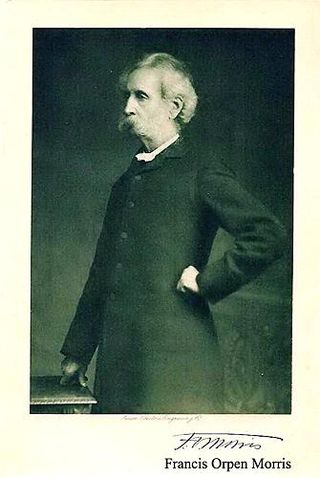
Francis Orpen Morris was an Anglo-Irish clergyman, notable as "parson-naturalist" and as the author of many children's books and books on natural history and heritage buildings. He was a pioneer of the movement to protect birds from the plume trade and was a co-founder of the Plumage League. He died on 10 February 1893 and was buried at Nunburnholme, East Riding of Yorkshire, England.

The Modern Game is a British breed of ornamental chicken which originated in England between 1850 and 1900. It was bred from gamecock stock, but solely as an exhibition bird.
Wildlife law in England and Wales is the law relating to the protection of wildlife in England and Wales. Much of existing UK law dates from pre-Victorian times. Wildlife was viewed as a resource to be used; phrases such as "game" or "sporting rights" appear. Public opinion is now much more in favour of protection of birds and mammals rather than the landowners’ interests.

Henry Horrocks Slater was an English parson-naturalist who studied ornithology, entomology, and botany.
The Association for the Protection of Sea-Birds was formed in the late 1860s by The Rev. Henry Frederick Barnes-Lawrence the incumbent at Bridlington Priory to stop the practice of shooting sea birds for sport, a practice which was legislated for in the Sea Birds Preservation Act 1869. As well as promoting the society in Yorkshire Barnes-Frederick also set up a branch in Ryde where he had been a Curate.
Henry Frederick Barnes-Lawrence was an Anglican clergyman, notable as the ornithologist who founded the Association for the Protection of Sea-Birds and with others generated the pressure which led to the 1869 Sea Birds Preservation Act.
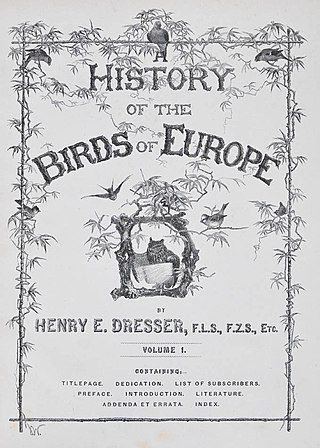
A History of the Birds of Europe, Including all the Species Inhabiting the Western Palearctic Region is a nine-volume ornithological book published in parts between 1871 and 1896. It was mainly written by Henry Eeles Dresser, although Richard Bowdler Sharpe co-authored the earlier volumes. It describes all the bird species reliably recorded in the wild in Europe and adjacent geographical areas with similar fauna, giving their worldwide distribution, variations in appearance and migratory movements.
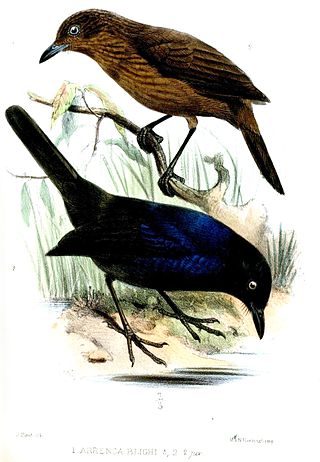
Birds described in 1872 include the Chilean flamingo, snowy egret, black-tailed crake, Cyprus warbler, Baikal bullfinch, Persian shearwater, red-fronted antpecker, Tibetan serin, Newton's parakeet and the orange fruit dove.
















